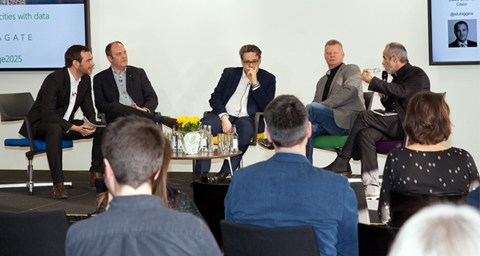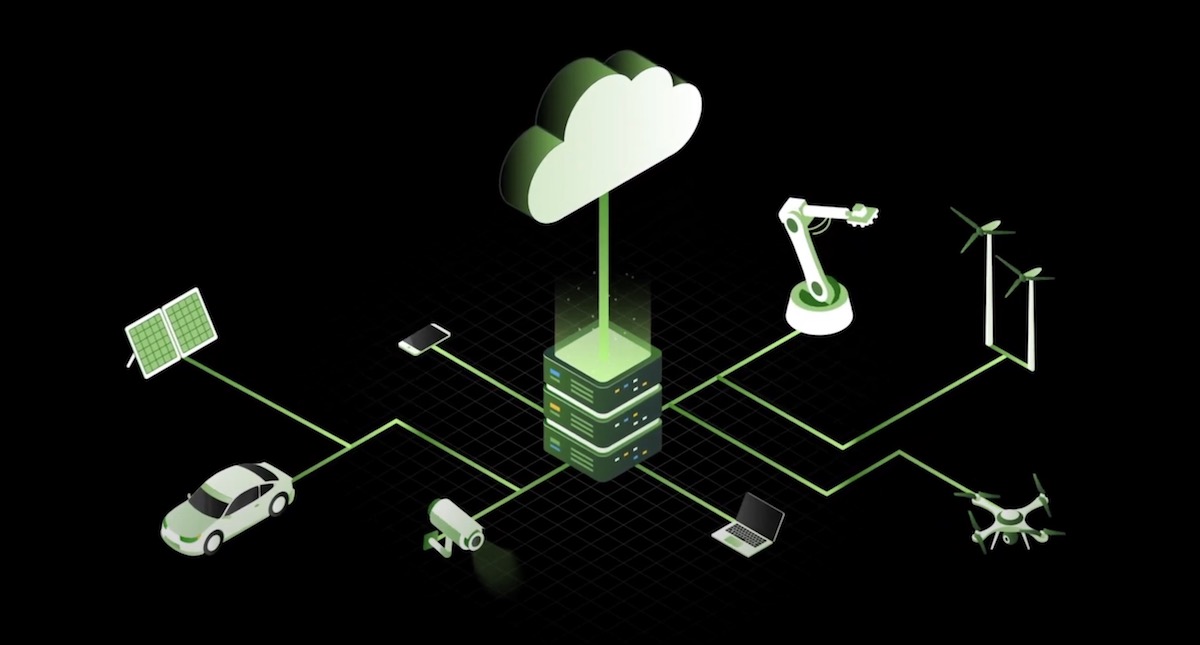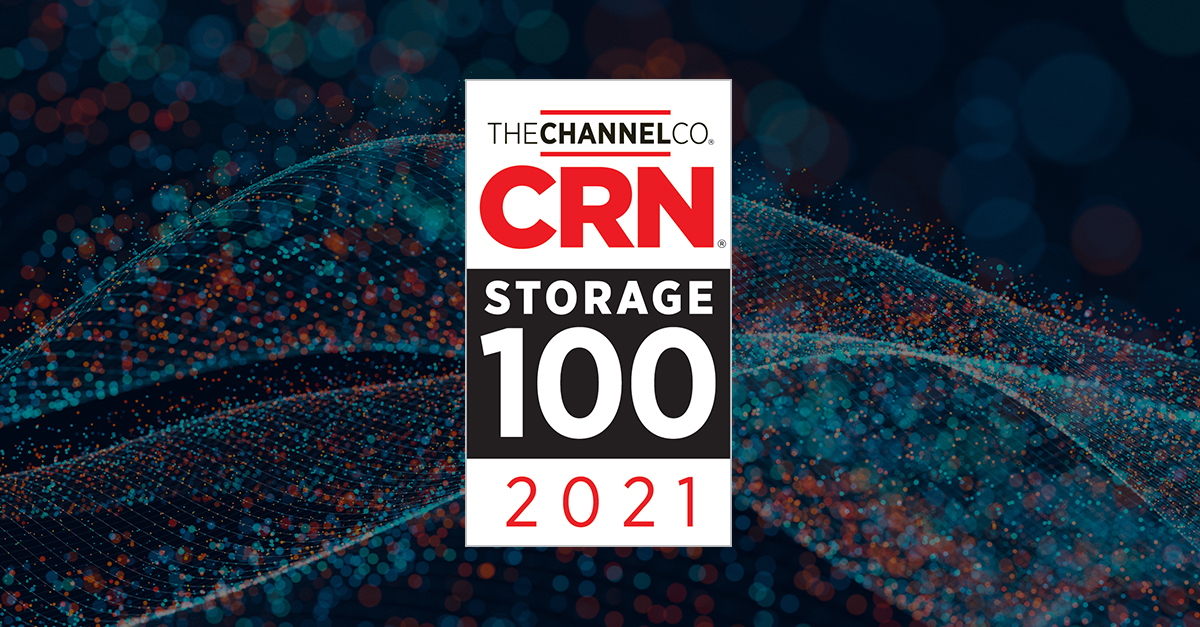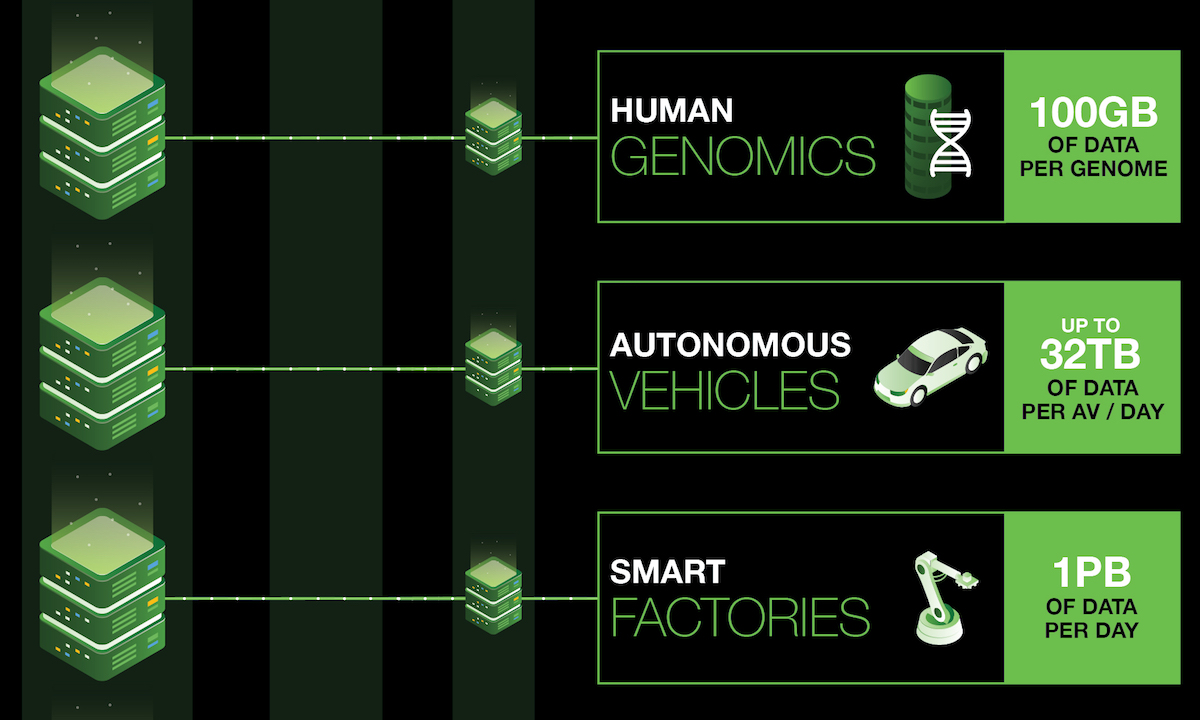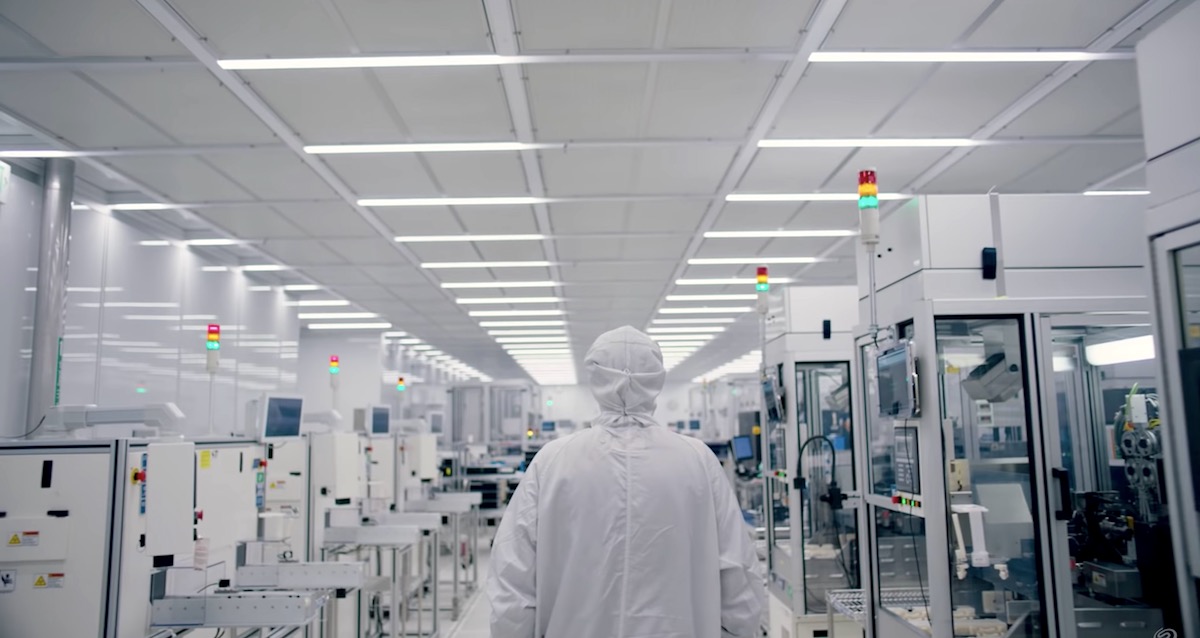According to the UN, around 70% of the world’s population will live in cities by 2050 — that’s an estimated 7.2 billion people. It’s no surprise then that the concept of smart cities is one of increasing interest and importance to city planners, governments and stakeholders across the world.
That’s why on February 7, 2018, Seagate convened European media, customers and a panel of industry-leading experts at Level 39 in Canary Wharf to explore the building blocks and technologies needed to make smart cities in Europe a reality. Joined by Stuart Higgins, Head of Smart Cities UK&I at Cisco; Eddie Seymour, European Technical Director at NVIDIA; Kevin Borras, Editor of Thinking Cities Magazine; and Carlos Moreno, Senior University Professor at Sorbonne University, we discussed – and exemplified – the fact that organizations from all sectors need to collaborate to make cities smarter.
At the event, Seagate representatives defined a smart city as a city which uses new communication technologies and Internet of Things (IoT) devices. However, IoT is not just about connecting things to the internet. Instead, it’s about automating data capture so it can be gathered, analyzed and utilized more quickly and efficiently.
The reason why this is so important is because of the increasing amount of data we will all be creating. In the Data Age 2025 study it was revealed that an average connected person anywhere in the world will interact with connected devices nearly 4,800 times per day by 2025 – basically one interaction every 18 seconds. Joining up this data holds great value for cities and their residents; such as helping to improve air quality, reduce traffic and road accidents, and provide a more personalized and efficient healthcare service, to name a few. There are endless applications emerging and it’s exciting to see how data is helping to create a better quality of life for people living in cities.
Data is becoming the backbone of cities and as new data types and data sources are continually emerging, Seagate believes that in order for a city to be truly smart, the way it interacts with data must change in a considerable way. Ultimately, the more data that flows freely – and securely – the more innovation is possible.
However, across Europe there are unique challenges to realizing the promise of the smart cities concept. One of the biggest challenges is around infrastructure as many countries in Europe are old, historic cities with legacy systems. This is a stark contrast to new cities like Dubai that can build from the “bottom – or internet – up.”
That said, things are changing in many European countries. For example, the Mayor of London recently called for the technology community to provide input on what can be done to ensure better digital collaboration across London’s boroughs and public services. Dubbed the Smart London Plan, it will be launched in June and includes innovations such as smarter use of data to plan bus routes and the crowdsourcing of pollution data to provide updates on air quality in real time. This collaboration will result in better data-sharing and enable the city to be designed around Londoners’ needs – the very embodiment of a smart city.
Barcelona is another city that has harnessed technology to transform itself into a model of data-driven, smart urban systems. Over eighty projects have been launched in recent years, with data analysis now helping to do things like manage the efficiency of the city’s parks, monitor rainfall and humidity, and determine how much irrigation is needed in the area. The city has always been considered forward thinking, from offering free Wi-Fi through its street lighting to using sensors to monitor air quality, now it’s looking to capitalize on IoT. Following the launch of Smart City Barcelona, the city has since generated 47,000 new jobs, saved more than £40 million on water and over £30 million through smart lighting annually.
Elsewhere in Milan, under the Sharing Cities program, the retrofitting of buildings is helping to deliver radical improvements in energy efficiency and reduce CO2 emissions. And in Lyon, under the Smarter Together program, an electric-vehicle car-sharing system and an autonomous driverless electric shuttle are being introduced to improve mobility.
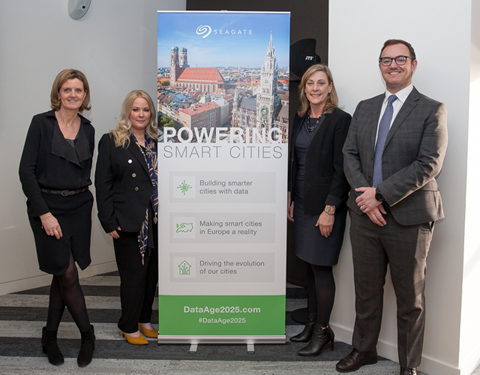
Seagate executive Kate Scolnick, second from right, and Seagate’s EMEA corporate communications team Valerie Labrune, Helen Farrier and Paul Bodley
Edge computing can also be applied in various scenarios during smart city construction, including network rollouts, sensor installations, system platform construction, and data collection. For example, in Milton Keynes, in the UK, NVIDIA use Metropolis (its edge-to-cloud platform) to deliver intelligent video analytics that can assist residents with traffic and parking management as well as other city services.
These are just some examples that demonstrate how crucial it is for city infrastructures to adapt to the rise in population, technology use and data growth. Cities are a community so it is not one individual’s job to drive this – all parties, from government through to business, must participate. That’s why, as a leading data company, Seagate is best placed to be a strategic partner to enable these private and public organizations to maximize the potential of their data and make smart cities a reality.



